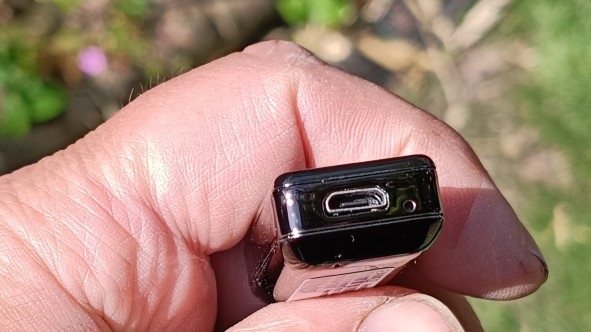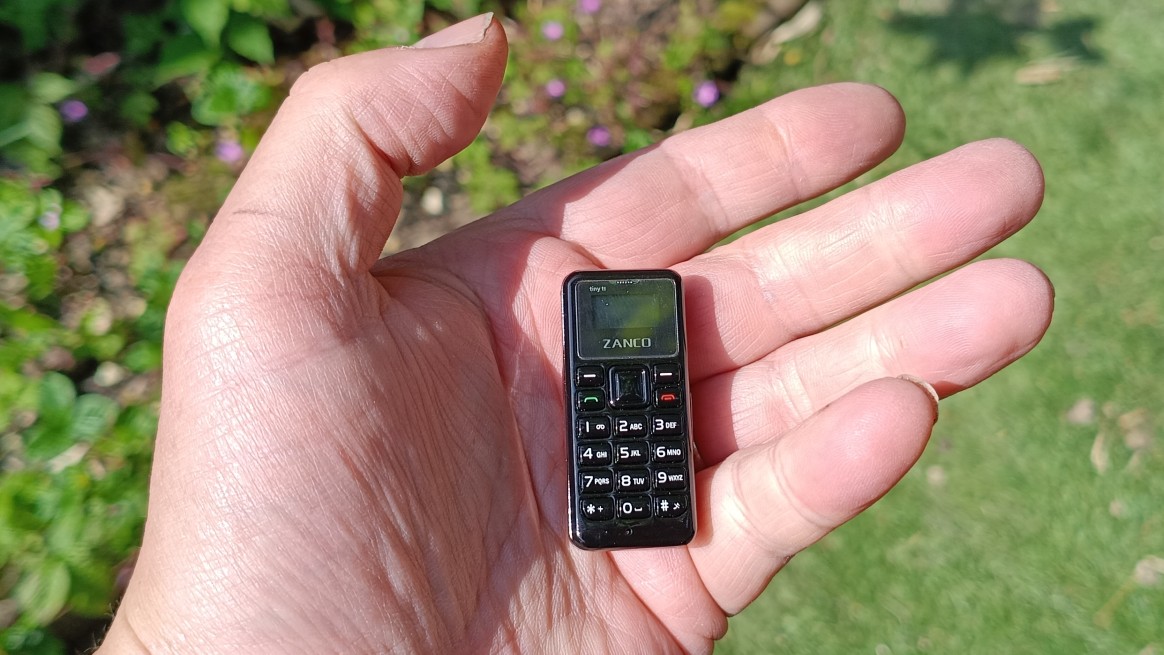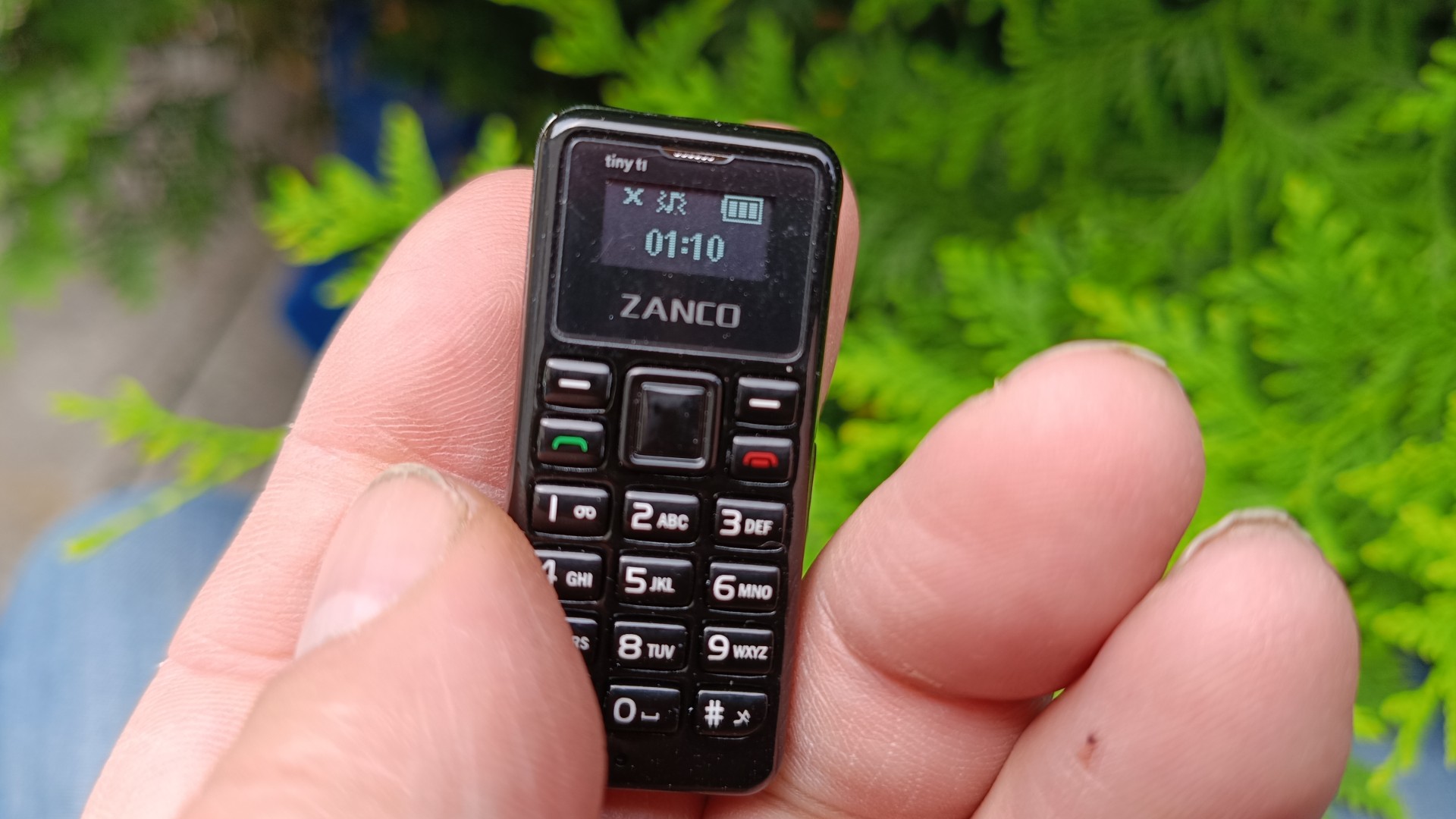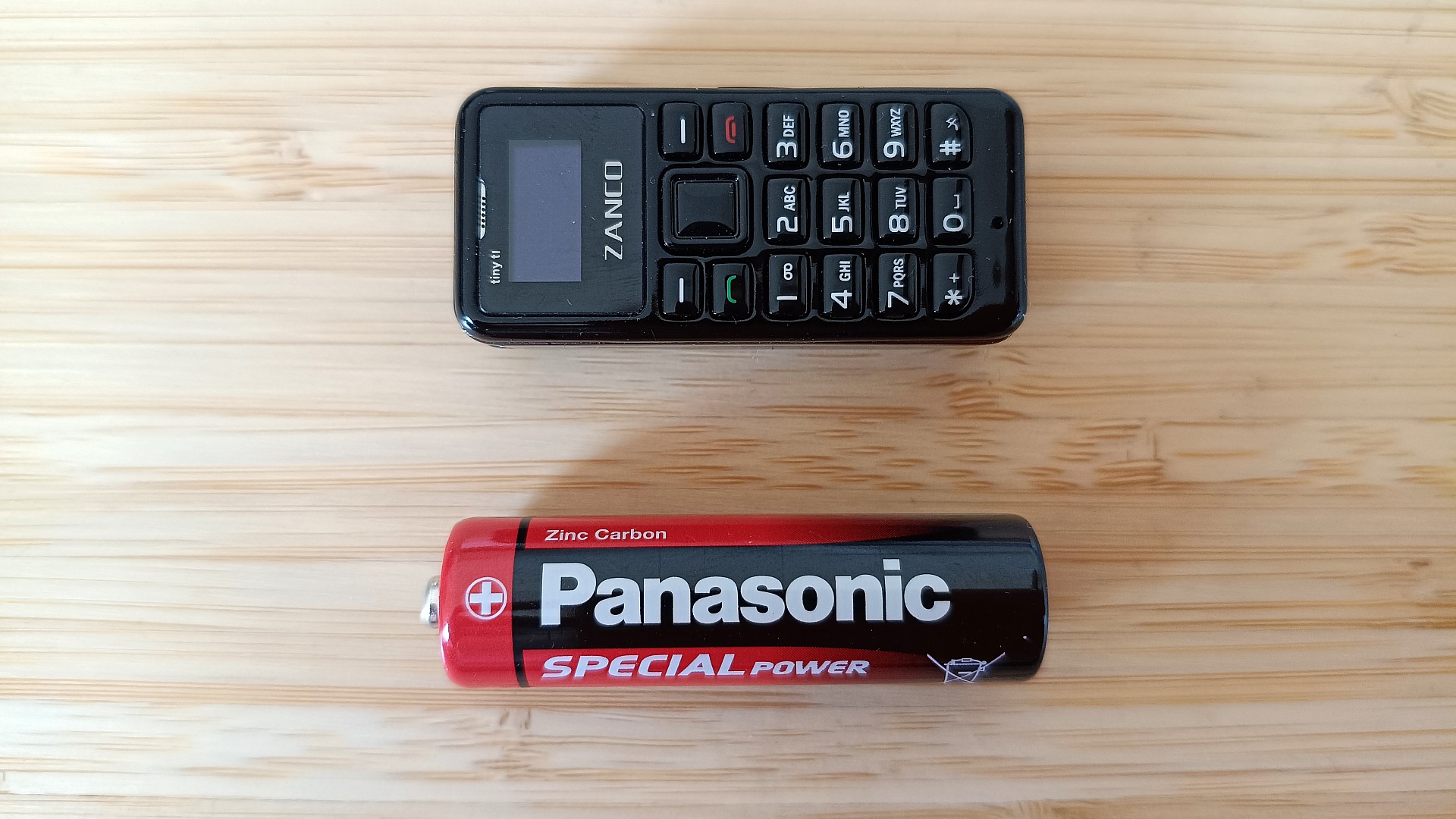Digital Camera World Verdict
The Zanco Tiny T1 delivers on its promise of being ridiculously small while actually functioning as a real phone. Call quality is decent and it allows you to take a phone to places you wouldn't normally take a phone. However, with no camera, painful text input, limited functionality and battery life, plus a screen you'll need to squint at, it's only ever going to have niche appeal.
Pros
- +
So tiny it fits anywhere
- +
Good call quality
- +
Great conversation starter
- +
Decent build quality
- +
Voice changer feature
Cons
- -
Texting is genuinely painful
- -
Screen is barely usable
- -
2G only
- -
Battery life is short
- -
Expensive for what it is
Why you can trust Digital Camera World
When I first heard about the "world's smallest phone," I figured it was marketing hyperbole. Then the Zanco Tiny T1 arrived, and I genuinely gasped when I opened the box. It's absolutely minuscule; about the size of USB stick. It's smaller than most camera remotes, and lighter than many lens caps.
As photographers, we're used to carrying gear that prioritizes function over form. The Tiny T1 flips this completely, being all about the spectacle of its impossible size. But after living with it for a few weeks, I've figured out some specific situations where it actually makes sense.
The Zanco phone launched via Kickstarter back in 2017 and has since gained a cult following among people who want the ultimate minimalist backup device. At £35.95, it's not cheap for what it offers, but you're paying for the engineering marvel of cramming a working phone into something this tiny.
Zanco Tiny T1: Specifications
Screen | 0.49-inch OLED (200 x 200 pixels) |
Storage | 32MB RAM |
Camera | None |
Connectivity | 2G GSM only, Bluetooth 3.0 |
Battery | 200mAh |
Dimensions | 46.7 x 21 x 12mm |
Weight | 13g |
Talk time | 3 hours |
Standby | 3 days |
Zanco Tiny T1: Pricing and availability
The Tiny T1 retails for $49.99 / £35.95, which feels steep when you consider you can get a perfectly decent feature phone, such as the Nokia 110 4G, for less money. But you're not really buying this for value; you're buying it for the sheer entertainment value of owning a working phone that's smaller than a matchbox.
Zanco Tiny T1: Build and handling
Let me be absolutely clear about the size here: this phone is genuinely shocking when you first see it. I've shown it to dozens of people, and every single one has done a double-take. It measures just 46.7 x 21 x 12mm and weighs only 13g. That means it weighs less than a single AA battery – and is a similar size too!
Despite the tiny size, the build quality is surprisingly solid. The black plastic shell feels sturdy rather than cheap, and it survived being dropped several times during testing. It's pretty easy to drop, as you might imagine, because it's so small. For this reason, the included silicone cases and lanyard are essential. Without them, you'll lose this thing immediately.

The screen is a tiny OLED display that's actually quite sharp for its size, though obviously reading anything on it requires some serious squinting. Anyone who needs glasses to see things close up should probably just not even try, unless you're willing to mess about with a magnifying glass.
The best camera deals, reviews, product advice, and unmissable photography news, direct to your inbox!
Below that, you get a full numeric keypad with surprisingly tactile buttons. The keys are curved and well-spaced considering the constraints, making them more usable than you'd expect. Navigation is handled by a four-way pad with center select button, plus the usual call and end buttons. Everything feels appropriately miniaturized but functional.
Zanco Tiny T1: Performance
Here's where things get interesting. Despite looking like a toy, the Tiny T1 actually works as advertised. Call quality is genuinely impressive: voices come through clearly and the microphone picks up speech well. I've had proper conversations on this thing, though holding something this small to your ear does feel bizarre.
The 2G-only connectivity is a significant limitation in 2025, but it still works on most networks including the major UK carriers. You'll need to check coverage in your area, as 2G networks are gradually being phased out in some regions.
Battery life is where the size really hurts. The 200mAh battery gives you about three hours of talk time and three days on standby. That's actually not terrible for something this small, but it means you'll be charging it every few days even with light use.
Bluetooth works well for pairing with other devices, which opens up some interesting possibilities for photographers. You can sync contacts from your main phone and even use it as a discrete communication device while your main phone handles camera control duties.
Texting is where the Tiny T1 becomes genuinely painful. The keys are small enough that accurate typing requires real concentration, and you're back to the old T9 predictive text system of pressing keys multiple times. Reading messages on the tiny screen involves scrolling through text word by word. I managed to send texts, but it took about five times longer than on a normal phone.
Zanco Tiny T1: Use for photographers
The Zanco Tiny T1 doesn't include a camera. However, you can imagine several scenarios where the Tiny T1 could be useful to photographers.
For discrete event photography, when shooting weddings or corporate events where you need to stay reachable but don't want a large phone visible, the Tiny T1 can hide completely in a pocket or even clip to your camera strap.
It's also handy for adventure and travel photography: for wilderness shoots where you want emergency communication without the bulk, this could work as an ultra-light backup, though the short battery life is a concern. In studio work, when your hands are full with lighting equipment and cameras, having a tiny phone on a lanyard means you won't miss important calls.
In short, the Tiny T1 is a great option if you want to have a phone, anywhere you wouldn't normally have a phone.
The voice changer feature, while gimmicky, could actually be useful for photographers who need to make anonymous calls for location scouting or permissions. And let's be honest; most people buying this phone are doing it for the wow factor.
I've never owned a gadget that generates more genuine amazement from people. Everyone wants to hold it, take photos with it, and ask where they can get one. For photographers who want a conversation piece to break the ice with clients, the Tiny T1 scratches that itch perfectly.
Zanco Tiny T1: Verdict
I'll be frank: my guess is the Zanco Tiny T1 is most popular with people trying to smuggle it into jails. But if you're not currently serving time for your crimes, what else is it good for?
For photographers specifically, I can see niche applications in event work, adventure photography, and situations where discretion is paramount. For instance, maybe you're a photojournalist crossing a border where phones are routinely confiscated. Or maybe you're dressed up at a fashion event, and want something you can pocket without ruining the line of your outfit.
Otherwise, I'd say the Tiny T1 is undeniably a novelty item first and a practical phone second. It's expensive for what it offers in terms of actual functionality, and there are much better feature phones available for less money.
For most people, this is more a conversation starter than a communication device. Which is fine, but don't expect it to replace your main phone, and definitely don't expect to enjoy texting.
Check out our guides to the best burner phones and to the best dumbphones for alternative options.
Tom May is a freelance writer and editor specializing in art, photography, design and travel. He has been editor of Professional Photography magazine, associate editor at Creative Bloq, and deputy editor at net magazine. He has also worked for a wide range of mainstream titles including The Sun, Radio Times, NME, T3, Heat, Company and Bella.
You must confirm your public display name before commenting
Please logout and then login again, you will then be prompted to enter your display name.





